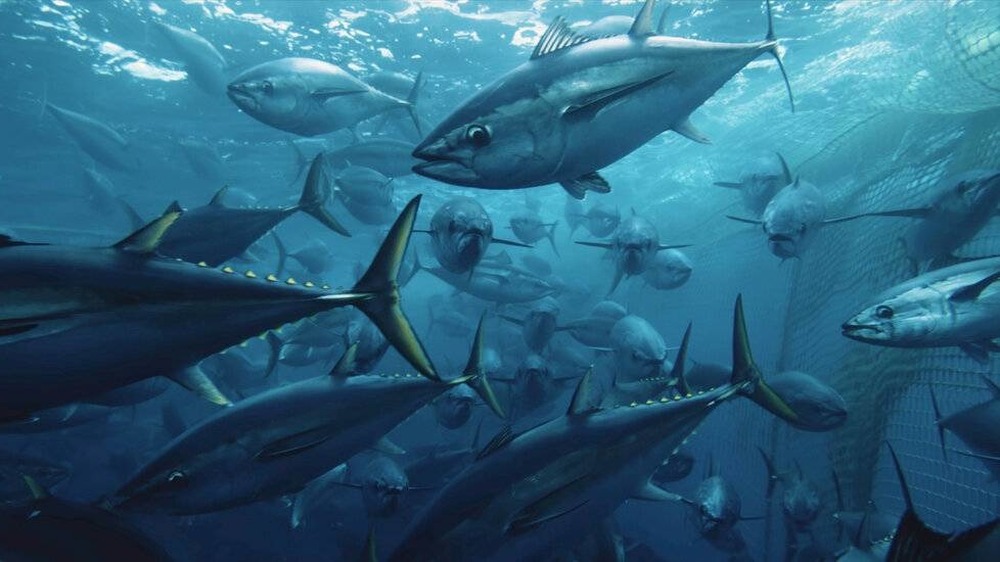The Eye-Opening Netflix Documentary That Has Everyone Talking
Covering 70% of the planet's surface, oceans are easy to take for granted, but it's vital that we take care of them. The world's seas produce over half of the oxygen we breathe, while helping to transport heat around the globe, assisting with climate regulation (via National Ocean Service). It seems like most everybody knows how much garbage goes in every year and how filthy the ocean has become, but it's hard to grasp the full extent of the damage. That's why so many people are watching the newest Netflix documentary — Seaspiracy — which shines a light on the existential threat we're facing with our oceans.
The film debuted on the streaming platform on March 24, and while it may derive its title from the word "conspiracy," the threats it illuminates are all too real to ignore. From the commercial fishing industry to the amount of plastic that actually goes into the ocean every year, the documentary makes the strong case that it's time to begin making substantial changes to the way humanity operates regarding the world's seas. With such provocative filmmaking on display, it's easy to see why the movie has already cracked into Netflix's Top 10.
There are some gory and extreme images throughout the movie, but don't let that deter you. It's essential viewing to fully grasp the threats mankind is dealing with, and once you see it, you'll definitely want to make changes in your own life.
Seaspiracy encourages more active measures to protect the oceans
There are terrifying creatures beneath the ocean's surface, but some of the things we do above it are just as bad, and when there are billions of dollars to be made, corruption can't be too far behind. With just a 90-minute run time, Seaspiracy can't go into every detail of the commercial fishing industry, but you'll probably feel encouraged to start doing your own independent research. Many of the details brought up in the documentary are not new, but they're worth repeating for anyone who may have missed them the first time. For example, in 2014, The Guardian shone a light on how slave labor was used to supply prawns to markets in the United States and United Kingdom. Seaspiracy hammers this nail again and even includes interviews with former slaves, who talk about their experiences.
As if those moments weren't bone-chilling enough, there are some pretty horrific stats about how long the human race has to turn things around before doing irreparable harm to the planet. If the oceans are dead, then humanity gets one giant question mark placed over it, so the time for action is now. In its review of the doc, Decider says "Tabrizi pieces together a mostly effective — and sometimes thoroughly disturbing — mosaic portrait of an industry left to its own unscrupulous devices." The review goes on to mention that the film can be sensationalistic at times, but the underlying message is clear — humanity is destroying the oceans.

